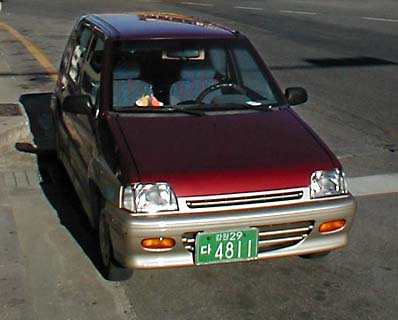

|
Once upon a time, the
Tico
just about owned the Korean streets.
This is because Korea charged vehicle taxes and usage fees based on engine size. So
the difference in cost between small and large vehicles was even wider than in, say, the US. Until the early 2000s, the tax hit on large vehicles was pretty substantial. The rates moved up quickly as the engines got larger. The Korean government figured (reasonably, I think) that if you could afford a big, powerful car, then you must be a big, powerful person with a fat wallet. You could afford to pay for some of the social costs of driving a big, heavy vehicle - pollution, traffic congestion, and accident carnage. So nearly everybody drove tiny cars, such as the Tico and the Kia Pride. (If you live in the US, you may remember the Pride - not under that name, but as the Ford Festiva.) But in 1999, the tax rates were flattened. I'm sure there was some lobbying for this by the Korean auto industry. But plenty of the lobbying came from outside Korea -- specifically, from the US Trade Negotiator's Office. Since US automakers don't build cars the size of a Tico, the US government thought they'd try to open Korea's markets to the large vehicles that GM, Ford, and Chrysler did build. The Trade Negotiator's Memorandum of Understanding was supposed to make big US vehicles more affordable for Koreans. It did part of that. Along with cheaper fuel, Western influence, and Korea's fiscal recovery, it did make big vehicles more affordable. Small car sales took a dive, and the number of SUVs on Korea's roads jumped 80 percent from 1999 to 2000, to over 251,000. So, yes, the MOA did put more big SUVs and minivans on Korean roads. But US vehicles? Uh, no. They're not Fords, Chevrolets, and Jeeps. Oh, you might see a Jeep Cherokee or Ford Ranger once in a great while. But by and large they're Hyundais, Kias, Daewoos, and Ssangyongs. Our old friend unintended consequences is still at work.
|